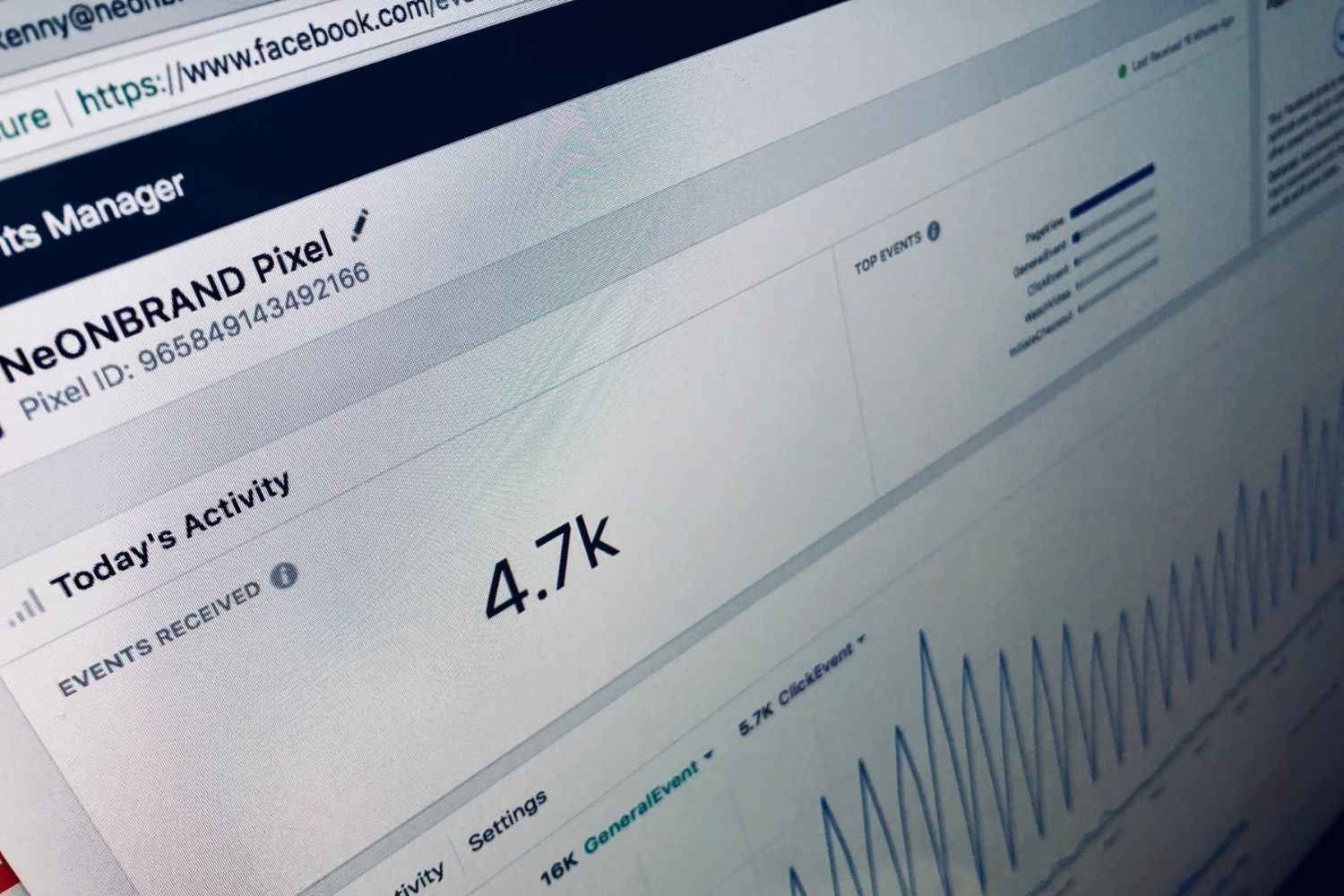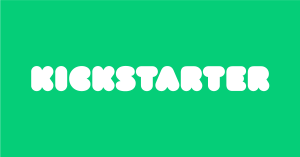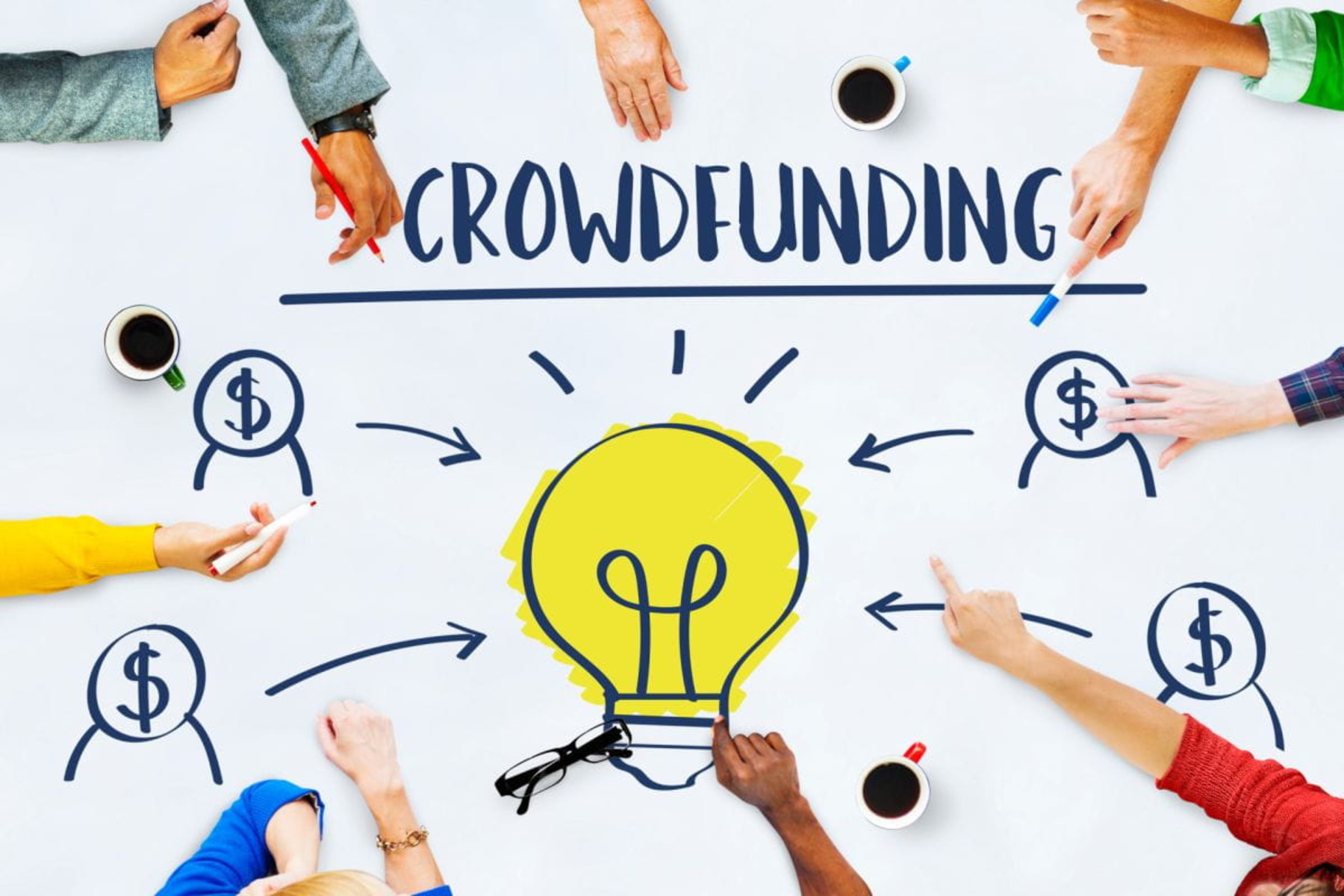Introduction
Welcome to the world of crowdfunding, where entrepreneurs, innovators, and dreamers turn to the power of the crowd to bring their ideas to life. In this digital age, running a successful crowdfunding campaign is not just about having a great product or a compelling story – it’s about having an effective marketing strategy in place. And when it comes to digital marketing, Facebook Ads is undoubtedly a game-changer.
Facebook Ads offers a unique opportunity to reach a vast audience of potential backers for your crowdfunding campaign. With over 2.8 billion monthly active users worldwide, Facebook provides unparalleled targeting capabilities and a wide range of ad formats to suit your campaign objectives. Whether you’re looking to generate awareness, drive traffic, or boost conversions, Facebook Ads can be a powerful tool in your crowdfunding toolkit.
But running successful Facebook Ads for crowdfunding is not as simple as boosting a post or randomly selecting a few targeting options. To get the most out of your ad spend and maximize your campaign’s success, you need a well-thought-out strategy and a deep understanding of how Facebook Ads work.
In this article, we will guide you through the key steps to running effective Facebook Ads for your crowdfunding campaign. We’ll cover everything from choosing the right campaign objective to crafting persuasive ad copy and optimizing your ad delivery. By the end, you’ll have the knowledge and tools to create compelling Facebook Ads that will captivate your target audience and drive them to support your campaign.
So, whether you’re a rookie crowdfunder or an experienced campaigner looking to level up your marketing efforts, get ready to dive into the world of Facebook Ads for crowdfunding. Let’s turn your dream into a reality, one click at a time!
Understanding Facebook Ads
If you’re new to the world of Facebook Ads, it’s important to familiarize yourself with the basics. Facebook Ads is a powerful advertising platform that allows businesses and individuals to create and manage targeted ad campaigns. With a wide range of ad formats and placement options, Facebook Ads offers a versatile way to reach your target audience.
One of the key advantages of Facebook Ads is its extensive targeting capabilities. You can target your ads based on demographics, interests, behavior, and even specific actions taken on Facebook. This level of granularity ensures that your ads are shown to the people who are most likely to be interested in your crowdfunding campaign.
Facebook offers various ad formats, including image ads, video ads, carousel ads, and more. Each format has its own unique advantages and can be used to convey your campaign message in a compelling way. It’s essential to choose the format that best aligns with your campaign goals and resonates with your target audience.
In addition to targeting and ad formats, Facebook also provides detailed analytics and reporting tools to track the performance of your ads. You can monitor key metrics such as impressions, clicks, conversions, and more, allowing you to make data-driven decisions and optimize your campaigns for better results.
Understanding how Facebook Ads work is crucial for running successful crowdfunding campaigns. By leveraging the platform’s targeting capabilities, utilizing engaging ad formats, and analyzing performance metrics, you can create highly effective ads that capture the attention of your target audience and drive them to support your campaign.
In the following sections, we will delve deeper into the various aspects of running Facebook Ads for crowdfunding. From defining your target audience to creating compelling ad creative, we’ll provide actionable tips and strategies to help you maximize the impact of your Facebook Ads and achieve your crowdfunding goals.
Choosing the Right Campaign Objective
When setting up a Facebook Ads campaign for your crowdfunding project, the first step is to choose the right campaign objective. The campaign objective determines the goal you want to achieve with your ads and helps Facebook optimize the ad delivery to maximize your desired outcome.
Facebook offers a wide range of campaign objectives, each designed to serve a specific purpose. The objective you choose will depend on the stage of your crowdfunding campaign and the action you want your audience to take.
If you’re just starting your campaign and aiming to generate awareness, the “Brand Awareness” or “Reach” objectives may be suitable. These objectives focus on getting your ads in front of as many people as possible to build visibility and familiarity with your campaign.
If you’re looking to drive traffic to your campaign page, the “Traffic” objective is a good option. This objective optimizes your ads to deliver clicks and visits to your website or landing page, allowing you to capture the attention of potential backers and direct them to your crowdfunding campaign.
For campaigns that are already generating interest and want to encourage people to take action, the “Engagement” or “Conversions” objectives can be effective. The Engagement objective focuses on getting likes, comments, and shares on your ads, while the Conversions objective aims to drive specific actions, such as signing up or making a donation, by utilizing the Facebook pixel or conversion tracking.
Choosing the right campaign objective is crucial because it not only influences the ad delivery but also determines the optimization options available to you. Each objective has specific optimization settings that help Facebook algorithmically deliver your ads to the most relevant audience who are likely to take the desired action.
Before selecting a campaign objective, it’s vital to clearly define your crowdfunding goals and consider the stage of your campaign. Keep in mind that you can also run multiple campaigns with different objectives to cater to different stages or objectives within your crowdfunding journey.
In the next section, we’ll dive into the process of defining your target audience and understanding who you should be targeting with your Facebook Ads to maximize your campaign’s success.
Defining Your Target Audience
One of the keys to a successful Facebook Ads campaign for crowdfunding is effectively defining your target audience. By understanding who your ideal backers are, you can create highly targeted ads that resonate with them and increase the likelihood of conversion.
Start by considering the demographics and characteristics of your target audience. What age group, gender, and location are most likely to be interested in your crowdfunding campaign? Think about the interests, hobbies, and behaviors that align with your project. Are there specific groups or communities that would be more inclined to support your campaign?
Utilize Facebook’s targeting options to narrow down your audience. You can select specific demographics, interests, behaviors, and even connections to your page or existing backers. Additionally, Facebook’s Lookalike Audience feature allows you to target users who are similar to your existing audience, expanding your reach to new potential backers with similar interests and behaviors.
Consider creating multiple ad sets to target different segments of your audience. This allows you to tailor your messaging and creative to each specific group, increasing the relevance and effectiveness of your ads. For example, if your campaign appeals to both outdoor enthusiasts and tech-savvy individuals, you can create separate ad sets targeting each group and customize your ads accordingly.
Continuously monitor and analyze the performance of your ads to gain insights into the characteristics and behaviors of your most responsive audience segments. Use this information to further refine your targeting and optimize your campaign for better results.
Remember, a highly targeted audience is more likely to engage with your ads and take the desired action. By defining your target audience and tailoring your ads to their interests and preferences, you can increase the chances of attracting quality backers who are genuinely interested and passionate about your crowdfunding project.
Next, we’ll explore the steps to set up your ad account and get ready to launch your Facebook Ads campaign for crowdfunding.
Setting Up Your Ad Account
Before you can start running Facebook Ads for your crowdfunding campaign, you need to set up an ad account. An ad account is where you manage and organize your advertising campaigns, ad sets, and ads.
To create an ad account, log in to your personal Facebook account and navigate to the Facebook Ads Manager. From there, you can either create a new ad account or request access to an existing ad account if you’re working on behalf of a business or organization.
When setting up your ad account, it’s important to provide accurate and up-to-date information. Make sure to enter your billing details correctly to ensure smooth payment processing for your ads.
Once your ad account is set up, it’s a best practice to assign multiple people with different roles to access and manage the account. This allows for collaboration and ensures that responsibilities are shared among team members.
Facebook also offers additional features and tools, such as the Facebook Business Manager, which allows you to manage multiple ad accounts, pages, and team members from one centralized location. This can be particularly helpful if you’re running ads for multiple crowdfunding campaigns or managing campaigns for multiple clients.
Before launching your ads, it’s crucial to ensure that your ad account is properly configured and compliant with Facebook’s advertising policies. Familiarize yourself with the policies and guidelines to avoid any potential issues or violations that could impact the performance of your ads.
Setting up your ad account is just the first step in your Facebook Ads journey. In the next sections, we’ll dig into the creative aspects of your ads, starting with creating visually appealing ad creative that captures the attention of your target audience.
Creating Compelling Ad Creative
When it comes to Facebook Ads for crowdfunding, having visually appealing and engaging ad creative is essential to capture the attention of your target audience and compel them to take action. Here are some tips to create compelling ad creative for your campaign:
- Use eye-catching visuals: Incorporate high-quality images or videos that showcase your product or project. Use bright colors, captivating graphics, and clear visuals to grab attention as users scroll through their news feed.
- Tell a story: Use your ad creative to tell a captivating story that resonates with your audience. Connect emotionally by highlighting the problem your campaign solves or the impact it can make. Paint a picture of how your backers can be a part of that story.
- Add social proof: Include testimonials, reviews, or user-generated content in your ad creative to build trust and credibility. Seeing positive feedback from others can motivate potential backers to take action.
- Create a sense of urgency: Incorporate elements such as limited-time offers, countdown timers, or exclusive rewards to create a sense of urgency and encourage immediate action.
- Keep it concise: Keep your ad copy and headlines concise and to the point. Use clear and compelling messaging that quickly communicates the value of your campaign.
- Experiment with ad formats: Test different ad formats like carousel ads, video ads, or collection ads to see which ones resonate best with your target audience. Different formats can provide unique storytelling opportunities and engage users in different ways.
- Optimize for mobile: With the majority of Facebook users accessing the platform on mobile devices, make sure your ad creative is optimized for mobile viewing. Use vertical videos or images, and ensure that text is readable on smaller screens.
Remember to A/B test different versions of your ad creative to see what performs best. Test different visuals, headlines, ad copy, and calls-to-action to identify the most effective combination for your campaign goals.
By incorporating these tips and constantly iterating on your ad creative, you can create compelling and visually captivating ads that pique the interest of your target audience and drive them to support your crowdfunding campaign.
Next, we’ll dive into the important aspect of writing persuasive ad copy that complements your visually appealing ad creative.
Writing Persuasive Ad Copy
While visually appealing ad creative is important, the words you use in your Facebook Ads can make a significant impact on your campaign’s success. Writing persuasive ad copy is essential to grab the attention of your target audience, spark their interest, and compel them to take action. Here are some tips for crafting compelling ad copy:
- Know your audience: Understand the wants, needs, and pain points of your target audience. Craft your ad copy in a way that speaks directly to them and addresses their desires or challenges.
- Create a strong headline: Your ad headline should be attention-grabbing and clearly communicate the value of your crowdfunding campaign. Use powerful words, ask intriguing questions, or make a bold statement to pique curiosity.
- Show the benefits: Highlight the key benefits that your backers will receive by supporting your campaign. Whether it’s a tangible product, exclusive rewards, or the satisfaction of making a difference, emphasize what sets your campaign apart.
- Use social proof: Incorporate testimonials, reviews, or statistics to build trust and credibility. Showing that others have supported and benefited from your campaign can help sway potential backers to join in.
- Create a sense of urgency: Motivate action by emphasizing limited quantities, limited-time offers, or early bird discounts. Use language that encourages your audience to act now to avoid missing out on a great opportunity.
- Include a clear call-to-action: Tell your audience exactly what you want them to do, whether it’s to visit your campaign page, pledge their support, or share the campaign with their network. Make the call-to-action prominent and compelling.
- Keep it concise and compelling: Capture your audience’s attention with concise and compelling ad copy. Use short sentences, bullet points, and powerful language to convey your message effectively.
- Test and iterate: Regularly test different versions of your ad copy to see what resonates best with your target audience. Experiment with different messaging and calls-to-action to find the most persuasive combination.
Remember to align your ad copy with your overall campaign messaging and brand voice. Consistency throughout your ads and campaign assets will help build trust and familiarity with your audience.
By applying these tips and continuously refining your ad copy, you can create persuasive Facebook Ads that compel your target audience to take action and support your crowdfunding campaign.
Next, let’s move on to selecting the right ad placements to ensure your ads reach the right audience at the right time.
Selecting Ad Placements
When running Facebook Ads for your crowdfunding campaign, it’s essential to choose the right ad placements to maximize the visibility and impact of your ads. Facebook offers a variety of ad placement options across its platform and partner networks. Here are some considerations to help you select the most effective ad placements:
- Facebook News Feed: Placing your ads in the Facebook News Feed ensures high visibility as it is the most frequently visited section. Your ads will appear directly in users’ feeds as they scroll through, increasing the chances of engagement.
- Facebook Stories: Stories have become increasingly popular on Facebook. Placing your ads within stories can be effective as it offers a more immersive and visually engaging experience. Users can swipe up to access your campaign page directly.
- Instagram Feed and Stories: If your target audience is active on Instagram, consider placing your ads within the Instagram feed and stories. Instagram’s visually-focused platform can be highly effective in capturing the attention of users.
- Audience Network: The Audience Network allows you to extend the reach of your ads beyond Facebook and Instagram by displaying them on external websites and apps. This can help increase exposure and attract a broader audience.
- Instant Articles: Instant Articles are fast-loading articles within the Facebook mobile app. Placing your ads within Instant Articles can help reach users who consume content on mobile devices and engage with your ads seamlessly.
- In-Stream Video: If you’re running video ads, consider placing them within in-stream videos. These ads appear in between videos, such as during breaks or as mid-roll ads, and can capture the attention of users engaged in video content.
It’s important to consider your campaign goals, target audience, and the nature of your crowdfunding project when selecting ad placements. Experiment with different placements and track their performance to determine which ones resonate best with your audience.
Facebook’s automatic placements option allows the platform to optimize delivery across its various placement options based on where your ads are likely to perform best. This can save time and effort in manually selecting placements, especially if you’re new to Facebook Ads.
However, it’s also advisable to periodically review the performance of each placement and make adjustments as needed. You may find that certain placements perform better than others in terms of engagement, click-through rates, or conversions.
By strategically selecting ad placements, you can ensure that your ads reach your target audience in the most effective and engaging ways, increasing the chances of driving conversions and achieving your crowdfunding goals.
Next, we’ll discuss setting your budget and bidding strategy to optimize your ad spend and maximize the results of your Facebook Ads campaign.
Setting Your Budget and Bidding Strategy
Setting a budget and defining your bidding strategy is a crucial step in running a successful Facebook Ads campaign for your crowdfunding project. It’s important to allocate your budget effectively and choose a bidding strategy that maximizes the value of each dollar spent. Here’s how you can do it:
- Establish your overall budget: Determine how much you’re willing to spend on your Facebook Ads campaign. Consider factors such as the duration of the campaign, your crowdfunding goal, and the potential return on investment.
- Choose your budgeting option: Facebook offers two primary budgeting options – daily budget and lifetime budget. A daily budget sets a maximum amount to spend each day, while a lifetime budget sets a total amount to spend over the duration of your campaign.
- Select your bidding strategy: Facebook provides various bidding strategies to optimize your ad delivery and achieve your campaign objectives. The options include cost per click (CPC), cost per impression (CPM), and cost per acquisition (CPA). Choose the strategy that aligns with your campaign goals and budget.
- Monitor and adjust your budget and bids: Regularly monitor the performance of your ads to assess their effectiveness and make necessary adjustments. If certain ads or ad sets are underperforming, consider reallocating your budget or adjusting your bids to focus on higher-performing options.
- Consider campaign duration: Longer campaign periods generally require larger budgets, as it allows for consistent exposure and engagement. Shorter campaigns may have higher daily budgets to maintain performance during a compressed timeline.
- Test different budget levels: If budget permits, consider running tests with different budget levels to evaluate the impact on ad performance. Incrementally increasing or decreasing the budget can help identify the optimal spending amount for your specific campaign.
Keep in mind that the competitiveness of your target audience and industry can also influence the effectiveness of your budget. It’s essential to strike a balance between allocating enough budget to reach your audience and optimizing your bids to get the most value out of each click or impression.
Regularly review your campaign metrics and evaluate the return on investment (ROI) of your ads. If you notice positive results and a sufficient ROI, you may consider scaling up your budget to reach a larger audience and attract more backers.
By carefully planning and managing your budget and bidding strategy, you can maximize the impact of your Facebook Ads campaign and optimize your ad spend for the best possible results.
Next, we’ll dive into optimizing your ad delivery to ensure that your ads reach the right audience at the right time.
Optimizing Your Ad Delivery
Optimizing your ad delivery is crucial to ensuring that your Facebook Ads reach the right audience at the right time and maximize the chances of engagement and conversion. Here are some strategies to optimize your ad delivery:
- Refine your target audience: Continuously analyze the performance of your ads and identify patterns in audience engagement. Refine your target audience by exploring different demographics, interests, behaviors, and placements to identify the segments that respond best to your ads.
- Utilize Facebook’s optimization options: Take advantage of Facebook’s optimization options based on your campaign objectives. For example, if your goal is to drive conversions, use the Facebook pixel or conversion tracking to optimize your ads for specific actions, such as donations or sign-ups.
- Experiment with ad formats: Test different ad formats, such as images, videos, carousel, or collection ads, to see which ones resonate best with your target audience. Each ad format has its unique strengths and can engage users in different ways.
- Test different ad placements: Experiment with different ad placements to understand which ones generate the most engagement and conversions. Test placements in the Facebook News Feed, Instagram feed, stories, and audience network to find the optimal mix for your campaign.
- Optimize for mobile: As a significant number of Facebook users access the platform on mobile devices, ensure that your ad creative and landing pages are optimized for mobile viewing. Test the mobile experience and make necessary adjustments to improve the user journey and conversion rates.
- Monitor ad frequency: Keep an eye on the frequency at which your ads are shown to the same audience. If your ads become overexposed, users may tune them out or become fatigued with your campaign. Adjust your ad frequency or refresh your creative to maintain engagement.
- A/B test ad variations: Continuously test different versions of your ad creative, headlines, and calls-to-action to identify the most effective combinations. Use Facebook’s A/B testing feature or create separate ad sets to compare performance and make data-driven decisions.
- Optimize based on data: Regularly review the performance metrics of your ads, such as click-through rates, conversion rates, and cost per conversion. Identify trends and patterns and optimize your ads based on the data-driven insights to improve overall performance.
Remember that optimizing your ad delivery is an ongoing process. It requires continuous monitoring, testing, and refining based on the insights gained from data analysis. By consistently optimizing your ad delivery strategies, you can improve the effectiveness of your Facebook Ads and drive better results for your crowdfunding campaign.
Finally, let’s explore the importance of monitoring campaign performance and how it can help you make informed decisions to enhance your ad campaign.
Monitoring Campaign Performance
Monitoring the performance of your Facebook Ads campaign is essential for making informed decisions and optimizing your strategy to achieve better results. By regularly tracking and analyzing campaign metrics, you can identify areas of improvement, troubleshoot issues, and make data-driven adjustments. Here’s how you can effectively monitor your campaign performance:
- Key Performance Indicators (KPIs): Identify the KPIs that align with your campaign goals. These may include click-through rates (CTR), conversion rates, engagement metrics, cost per acquisition (CPA), return on ad spend (ROAS), or specific actions taken on your campaign page, such as contributions or registrations.
- Ad Reporting: Utilize Facebook’s robust ad reporting tools to track the performance of each ad, ad set, and campaign. Dive into metrics such as impressions, reach, clicks, and conversions to gain insights into how your ads are performing.
- Split Testing: Conduct split tests to compare the performance of different ad variations. Test different creative elements, audience segments, or ad placements to understand what resonates best with your target audience and drives higher engagement and conversions.
- Conversion Tracking: Implement conversion tracking on your campaign page to measure the actions taken by users after clicking on your ads. Track the number of contributions, sign-ups, or purchases directly attributed to your Facebook Ads, allowing you to evaluate the effectiveness of your campaign in driving desired outcomes.
- Performance Trends: Monitor performance trends over time to identify patterns and adjust your strategy accordingly. Analyze how metrics evolve throughout the duration of your campaign and make necessary optimizations to maintain or improve performance.
- Track Return on Investment (ROI): Calculate the ROI of your ad spend by comparing the revenue generated or contributions received against the cost of running your ads. This helps you assess the profitability of your campaign and make informed decisions about budget allocation.
- Regular Review: Set aside dedicated time for regular review and analysis of your campaign performance. This can be done weekly or biweekly, depending on the duration and scale of your campaign. Use this time to gather insights, identify trends, and adapt your strategy for better results.
By closely monitoring campaign performance and making data-driven decisions, you can optimize your Facebook Ads campaign for maximum effectiveness and return on investment. Continuously assess and adjust your targeting, ad creative, and bidding strategy based on the insights gained from performance metrics.
Lastly, let’s explore the importance of scaling and iterating your campaign to further enhance its success.
Scaling and Iterating Your Campaign
Scaling and iterating your Facebook Ads campaign is crucial to maximize its impact and continuously improve your results. As your campaign progresses, you can implement strategies to reach a wider audience, optimize conversions, and refine your approach based on the data and insights gained. Here’s how you can scale and iterate your campaign:
- Expand your reach: As you start to see positive results, consider increasing your ad budget to reach a larger audience. This can help generate more exposure, attract new backers, and increase the overall impact of your campaign.
- Explore new targeting options: Experiment with different targeting options to reach niche audiences or expand your target demographics. Utilize Facebook’s advanced targeting capabilities to identify untapped segments that might be interested in supporting your crowdfunding project.
- Diversify your ad formats: Test different ad formats to keep your campaign fresh and engaging. Consider utilizing video ads, carousel ads, or interactive formats to capture the attention of your target audience and drive higher engagement.
- Optimize based on data: Continuously analyze the performance metrics and make data-driven decisions. Identify the top-performing ads, ad sets, and targeting options, and reallocate your budget accordingly to maximize ROI and optimize conversions.
- Iterate on ad creative: Refine your ad creative based on user feedback, engagement data, and split tests. Experiment with different visuals, messaging, and calls-to-action to continually improve the effectiveness of your ads.
- Leverage retargeting: Set up retargeting campaigns to reach users who have interacted with your ads or visited your campaign page but haven’t converted. Retargeting can be an effective way to re-engage potential backers and encourage them to take action.
- Collaborate with influencers: Explore partnerships with influencers or industry experts who align with your crowdfunding project. Collaborating with influencers can help expand your reach, increase credibility, and attract a wider audience to your campaign.
- Monitor competitor campaigns: Keep an eye on the ads and strategies utilized by your competitors or similar crowdfunding campaigns. Analyze their tactics, learn from their successes and failures, and apply relevant insights to enhance your own campaign.
Scaling and iterating your campaign requires a combination of analytical thinking, creativity, and adaptability. Continuously test and refine your approach based on the insights gained from performance metrics and user feedback, adapting your strategy to improve engagement, conversions, and overall campaign success.
By scaling and iterating your Facebook Ads campaign throughout its duration, you can make the most of your ad spend, drive continuous improvements, and increase your chances of reaching your crowdfunding goals.
Conclusion
Running Facebook Ads for your crowdfunding campaign can be a game-changer in reaching and engaging a wide audience of potential backers. By following the steps outlined in this guide, you can create a compelling and effective Facebook Ads campaign that drives awareness, engagement, and ultimately, contributions to support your project.
From understanding the basics of Facebook Ads to defining your target audience, crafting engaging ad creative, and optimizing your campaign, each aspect plays a crucial role in the success of your crowdfunding efforts.
Remember to approach your campaign with a strategic mindset, leveraging the targeting capabilities, ad formats, and optimization options provided by Facebook. Continuously test and refine your ads based on data-driven insights and user feedback to maximize impact and return on investment.
Furthermore, keep an eye on campaign performance and make necessary adjustments and optimizations along the way. By monitoring your campaign metrics and adapting your strategy accordingly, you can make informed decisions to continually improve the effectiveness of your Facebook Ads.
As you scale and iterate your campaign, explore new audience segments, diversify your ad formats, and leverage retargeting to expand your reach and engage potential backers. Stay agile and be open to experimentation and collaboration, seeking opportunities to work with influencers or learn from industry competitors.
With a well-planned and executed Facebook Ads campaign, you have the potential to not only achieve your crowdfunding goals but also create a community of passionate supporters who are invested in your project’s success.
So, harness the power of Facebook Ads, connect with your target audience, and turn your crowdfunding dreams into a reality, one click at a time!

























